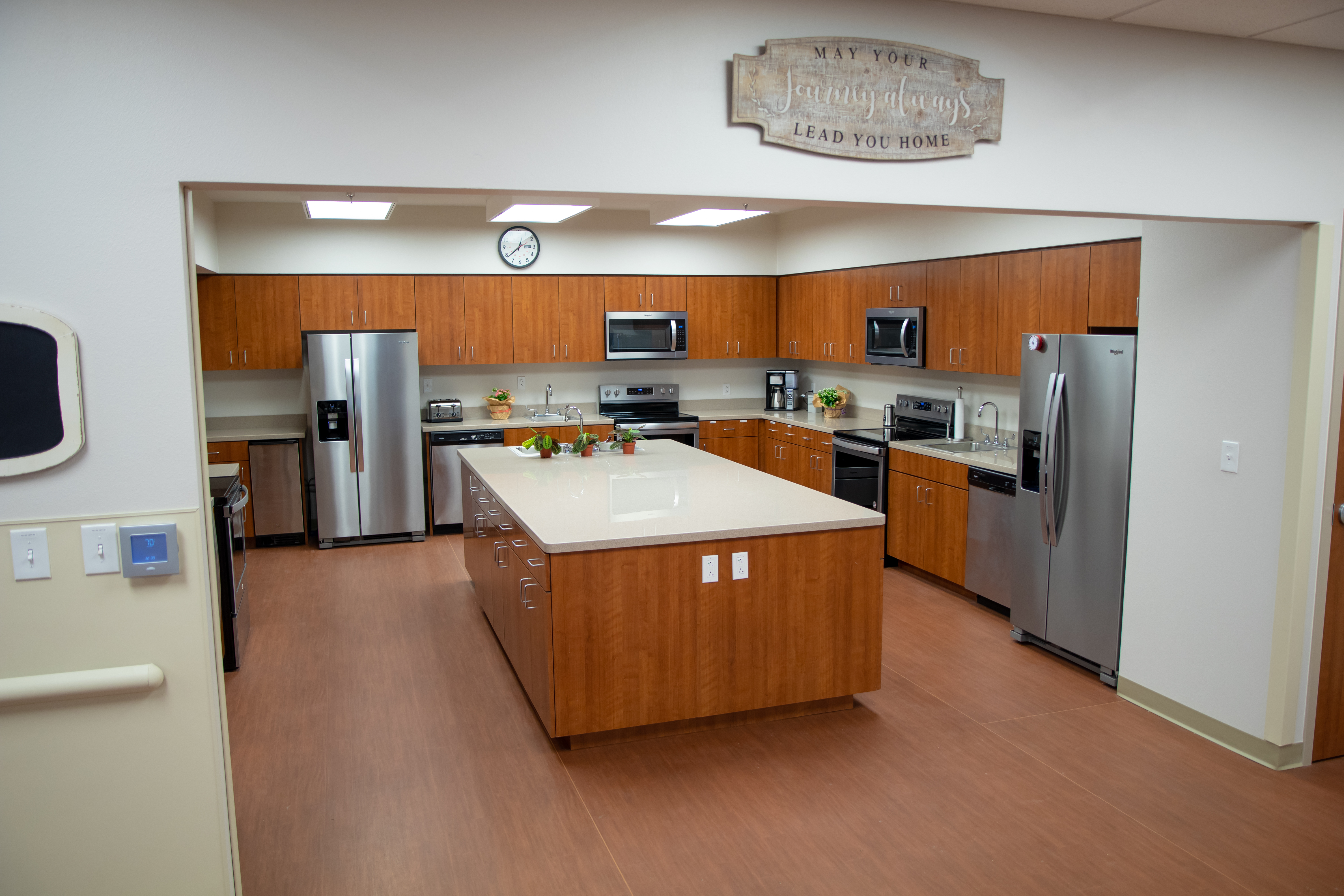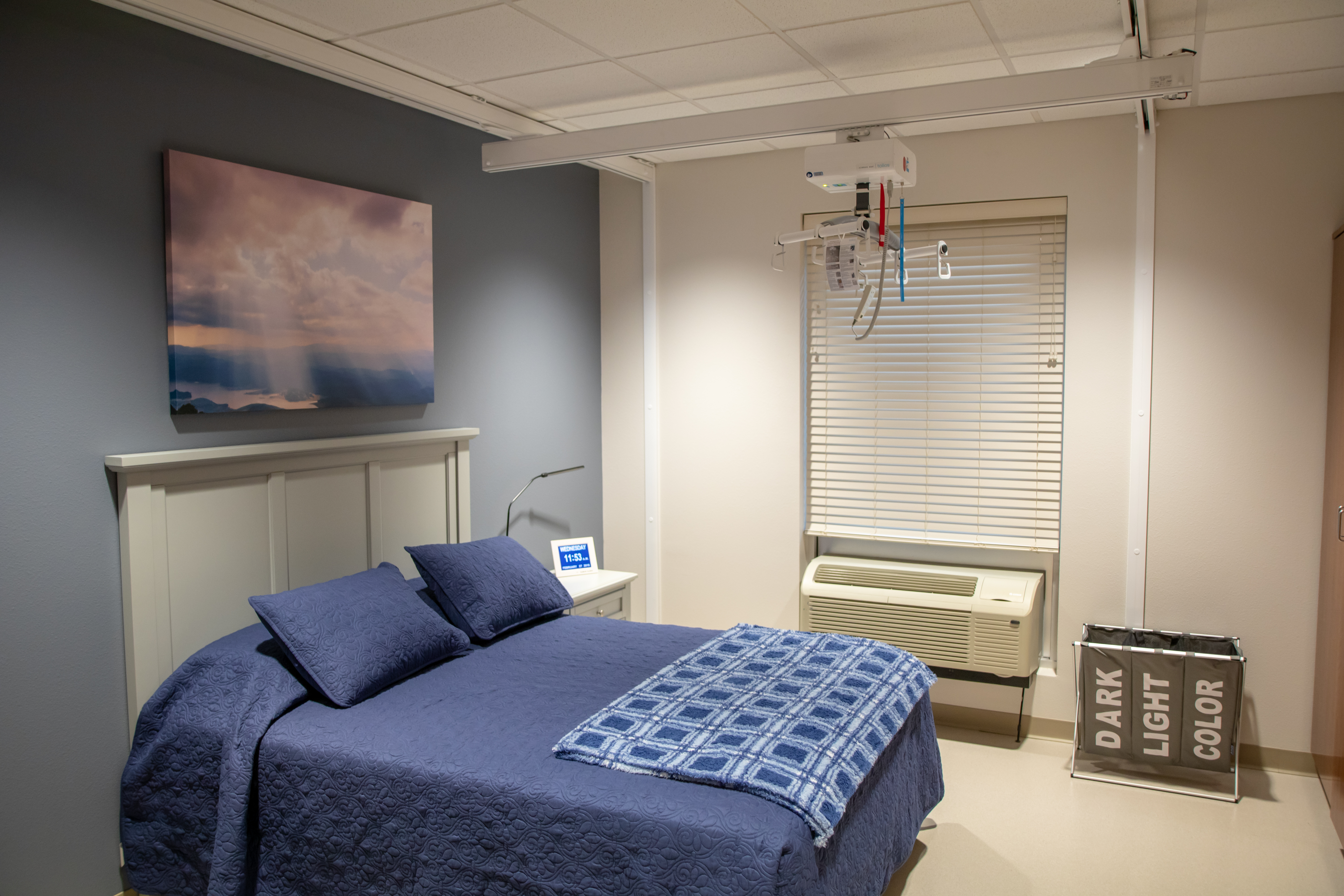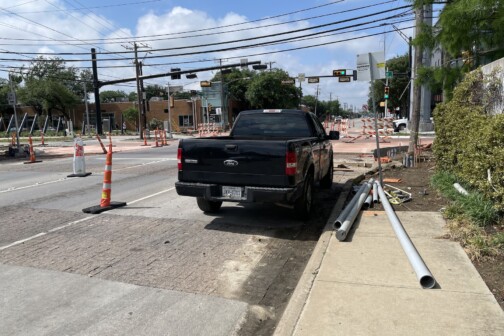
When a patient experiences brain trauma, their path often takes them to the emergency room, possibly to neurotrauma surgery, and they recover in acute inpatient rehab before they head home. But often times, the jump from inpatient facility to the home can be a bumpy one for patients with neurological trauma. Baylor Scott and White’s Neuro Transitional Rehabilitation Facility, which had its grand opening last week, hopes to smooth the transition.
The nine bed, 7,000-sqaure-foot facility allows each patient to have their own suite, and provides a domestic environment where they use a kitchen to prepare food, clean up and do laundry in the washing machines. There is a unique kitchen with three identical configurations to give the patients opportunities to practice the skills they will need to be at home. The facility is meant for patients who experienced a non-degenerative traumatic brain injury, but are believed to be able to make a strong recovery. The environment has many trappings of life at home, but with the support that many with a traumatic brain injury may need.
“There is not a place for them to go like this,” says program manger Jane Boutte. “It bridges the gap from the hospital to home.”
The program is meant for ages 16 and up and the program lasts 3-6 months. Patients live at the facility with 24-hour supervision and go through rehab at the hospital across the street during the day. The facility will be able to share medical data with the rehab hospital, which should help recovery.
Chief Executive Officer at Baylor Scott & White Institute for Rehabilitation – Dallas Dave Smith spoke about the need for consistent care for these patients. “Knowing where they are going and where they have been helps the process work,” he says.

Medical advancement has improved the likelihood of recovering from a traumatic brain injury, but with the increased survival rate there is an increased recovery time. Facilities like this, which are covered by most health insurance in Texas, step into that extended recovery time.
There is always a 1:3 staff to patient ratio at the facility, whose nine suites flank the kitchen, laundry, offices, and common areas. There are neuro rehab coaches, a registered nurse, a physical therapist, a speech therapist, an occupational therapist, a licensed professional counselor and even Orbit, a clinic dog that all aid in patients’ recovery.
Boutte described how clinicians work together to treat their patients. “We have a transdisciplinary approach because we need to be able reorient them to life,” she says.
The facility will also be part of a nationwide network that is studying traumatic brain injuries, hoping to analyze the outcomes after brain surgery, which could open up access to care for others to benefit from the unique treatment center.
Though the facility celebrated its grand opening last week, no patients have arrived because its final certificate of occupancy is held up with city permits. They are waiting on a report that looks at the sidewalks and egress into the parking lot.





